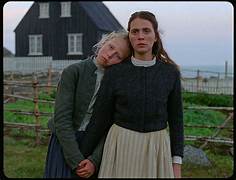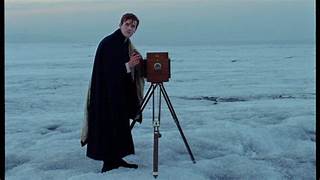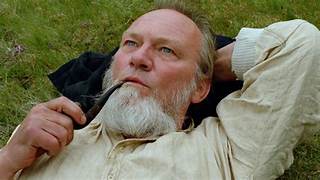I have seen Icelandic director Hlynur Pálmason’s epic masterpiece “Godland” twice in the last twenty-four hours, and its images haunt me.
Set in the latter part of the 19th century, the film follows the character of Lucas, a young clergyman played by Elliott Crosset Hove. His bishop in Denmark has assigned him to travel to a pioneer community in Iceland to oversee the construction of a church and establish himself as the parish priest. Despite numerous challenges, Lucas embarks on a harrowing journey by sea and overland with horses. He carries a heavy cross as part of his luggage throughout the journey.

Pálmason’s directorial genius and that of his masterful cinematographer (Maria von Hausswolff), plus a haunting choral score by Alex Zhang Hungtai, ensures that “Godland” becomes part of an elite group of films – Picnic at Hanging Rock, Aguirre, the Wrath of God, Black Robe and Tale of King Crab” in which outsiders with superior attitudes from supposedly more civilized countries underestimate, or fail to understand, the unique challenges, the beauty and the mystery of a foreign land.
A Bressonian aesthetic is present throughout as most of the supporting cast consists of non-professional actors who constantly and beautifully interact with their Icelandic horses. These beautiful beasts work from dawn to dusk and, in their struggle, radiate nobility. The film’s emotional austerity, its slow and stately pacing, its discourse on the inseparability of fate and death and the power of evil in earthly life also remind us of the somber presence of the great Danish film director and screenwriter Carl Theodor Dreyer who was surely an influence here.

Lucas carries a heavy tripod throughout his journey. The tripod contains a camera representing his desire to document Iceland’s people which he regards with a cold and scientific detachment. The one exception to this is the complicated and potentially romantic connection he forms with his translator, portrayed by Hilmar Gudjónsson, who, in one fantastic scene, sings lustily to a waterfall! Unfortunately at a river crossing, nature strikes and, this friendship, or perhaps something more, remains unfulfilled.
From this moment until almost the film’s final scene, Lucas’s life is dominated by his guide Ragnar (Ingvar Sigurdsson in a magnificent performance), who is contemptuous of the pampered Danish priest. Ragnar only speaks Icelandic while Lucas only speaks Danish. This Danish/Icelandic dichotomy is a constant theme throughout the film, down to the casting of the female leads – Vic Carmen Sonne as Anna, the older sister in the household that nurses Lucas back to health, is Danish, while Ída Mekkín Hlynsdóttir (the director’s daughter) as Ida, the younger sister, is Icelandic.

During his journey, the priest faces immense hardship and physical pain, which push him to the brink of madness. We feel the evil lurking inside of him. In one scene he loses consciousness and falls from his horse to the ground on the verge of death. At this point Pálmason’s cuts from a close-up of the priest’s face to a volcanic eruption, the frail human contrasting with the awesome power of the earth. Later in the film during a celebration to mark the completion of the village church, Pálmason’s and von Hausswolff treat us to an astonishing 360-degree camera turn. And, in another amazing sequence, using using “Koyaaniskatsi”-like time-lapse-photography, he captures the decaying body of a dead horse through the four seasons. It’s nature raw in tooth and claw and it’s awe inspiring.
Lucas survives and is taken in by Carl (Jacob Lohmann, superb), a farmer of comfortable means, who is the father of Anna and Ida. There is a romantic connection with Anna, but it is with Ida that Lucas is most relaxed, and you feel that maybe, just maybe, in a different time and place, this person could have been a different Lucas. The real Lucas before the damage was done.
https://thebrownees.net/essay-one-1-2-65-queer-films-under-the-hays-code-1934-1967/
https://thebrownees.net/essay-one-1-34-queer-films-made-under-the-hays-code-1934-1956/
https://thebrownees.net/essay-one-2-31-queer-films-made-under-the-hays-code-1957-1967/
https://thebrownees.net/essay-one-table-65-queer-films-made-under-the-hays-code-1934-1937/
https://thebrownees.net/essay-two-45-queer-films-from-1967-1976-queer-cinema-comes-out/


















